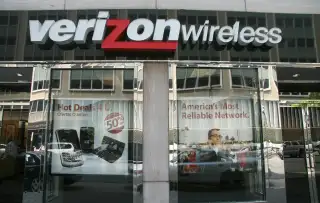Your Cell Phone Bill Is Probably Getting More Expensive, but It's Not Your Wireless Provider's Fault

If you thought your cell phone bills have mysteriously been creeping higher and higher, you’re not wrong. And there’s a frustrating reason why that has nothing to do with Verizon, AT&T, or whatever wireless provider you have.
According to the Tax Foundation, there has recently been a 36% increase in the Federal Universal Service Fund’s contribution rate, which all wireless carriers are required to pay for all “charges for interstate telephone service.” This surcharge is now taking up 9.1% of your wireless bill, up from 6.6%. Meanwhile, state and local wireless taxes also went up, from 12.5% to 12.7%. And these increases have been passed on to you.
The survey notes that government-mandated taxes, fees, and surcharges now account for about 21.7% of the average customer’s bill, “the highest rate ever” and an increase from last year’s total of 19.1%. Overall, Illinois has the highest overall wireless taxes at 31.2%, with Washington coming in second at 28.8%, Nebraska at 28.1%, New York at 27.7%, and Utah at 25.6%.
To put it another way, what the Tax Foundation calls “a typical American household” with four wireless phones paying $100 for service is now paying $260 “per year in taxes, fees, and surcharges.” Last year, that number was at $229.
Overall, wireless customers can expect to pay $17.1 billion in “taxes, fees, and government surcharges to federal, state, and local governments in 2019,” the Tax Foundation says, a bump of more than $1 billion in 2018.
More and more, Americans rely on wireless service as their main — if not only — source of digital communication, and this is especially true of lower income households. According to Centers for Disease Control data, “about 67 percent of all poor adults lived in wireless-only households and 57 percent of adults of all incomes lived in wireless-only households,” the Tax Foundation reports.
The only bright spot here is that while wireless taxes have increased, the average monthly service bills per subscriber have dropped 24%, due to competition in the industry.